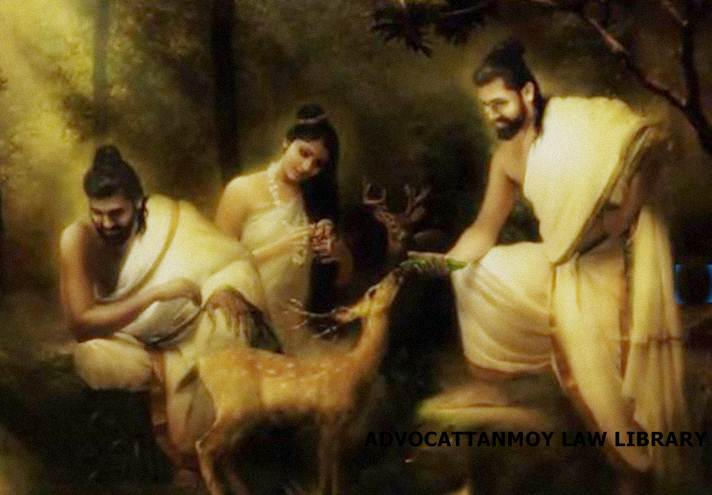Welcome to my blog,
This blog is part of our study. This Thinking activity is based on The Curse or Karna and was assigned by Megha Ma'am Department of English MKBU. In this task we have to give the answer to one question given below:
1) Write a critical note on Lakshman by Toru Dutt.
2) Do you think the character of Sita portrayed by Toru Dutt in her poem Lakshman differs from the ideal image of Sita presented in The Ramayana?
3) Can it be said that the dialogues between Sita and Lakshman in the poem Lakshman through light upon the perspective of gender? Explain.
4) Write a critical note on Toru Dutt’s approach to Indian myths.
5) Write a critical note on To a Hero-Worshipper by Sri Aurobindo.
6) Why does the poet say that God does not live in the Temple? Give reasons.
7) What type of social mentality does Rabindranath Tagore has presented in the poem Deeno Daan?
Write a critical note on Lakshman by Toru Dutt.
Toru Dutt, born in 1856 in Bengal, was an Indian poet from the renowned Rambagan Dutt family. After her family's conversion to Christianity in 1862, they faced social challenges and later moved to France in 1869. Toru's education in language and the arts in France, along with her affinity for French culture, greatly influenced her. She later moved to Britain, attending the University of Cambridge.
Toru began publishing at 18 and gained recognition for her collection "A Sheaf Gleaned in French Fields." Despite her untimely death from consumption at 21, her posthumously published work, "Ancient Ballads and Legends of Hindustan," showcased her translations of Sanskrit literature. Notable poems include "Sîta," "The Lotus," and "Our Casuarina Tree." Toru Dutt's synthesis of European and Indian influences in her poetry has earned her acclaim as a significant figure in Indian-English literature.
In spite of her untimely death, Toru Dutt remains an exemplary poet, and her works are widely regarded as being among the best of Indian-English writings. In particular, critics have paid much attention to Toru Dutt's lyric focus on the complexity of individual emotions, especially in light of her mixed religious heritage and her encounters with death from a young age. Much critical attention has also been paid to Toru Dutt's successful combination of European and Indian cultural influences, linking her identity as a cosmopolitan and multicultural figure to her poetic synthesis of English verse forms (such as the ballad) with Indian inspirations and legends.
Popular Poems:
1)Christmas
2)The Broken Bell
3)The Young Captive
4)Laxman
5)My Vocation
Lakshman" is a poignant poem by Toru Dutt, extracted from her posthumously published work "Ancient Ballads and Legends of Hindustan" (1882). The narrative is rooted in the Hindu epic Ramayana, specifically focusing on an episode where Rama, the hero, leaves his wife Sita under the protection of his brother Lakshman as he ventures to procure a golden deer.
The twist in the tale comes when the seemingly innocent deer transforms into a demon, and Rama is compelled to confront and defeat it. During Rama's absence, a pivotal moment unfolds as Sita, anxious upon hearing what she believes to be Rama's cries for help, implores Lakshman to investigate. To balance the dual responsibility of pleasing Sita and adhering to Rama's instructions to ensure her safety, Lakshman draws a line on the ground, instructing Sita not to cross it in his absence.
What follows is a poignant exchange between Sita and Lakshman, delving beyond the Ramayana's narrative. Sita, alarmed by the supposed distress calls of Rama, urges Lakshman to pay heed. In response, Lakshman attempts to reassure and counsel her, but Sita accuses him of conspiring against Rama and harboring ulterior motives to claim her as his own wife.
Despite the emotional turmoil and accusations, Lakshman remains composed. In a gesture of both blessing and resignation, he draws a circle with an arrow, marking the boundary Sita must not cross. Before leaving, Lakshman expresses calmness, praying for Sita's safety and invoking the protection of the forest deities. The poem concludes with a vivid depiction of the somber mood as a "sorrow dark" clouds Lakshman's face, and the departure is punctuated by the eerie scream of a vulture.
In Toru's embellishments of the original account, Toru Dutt enriches the narrative by providing vivid descriptions of the surroundings and emphasizing Rama's supremacy. In stanza 4, when Lakshman speaks, he enumerates a series of beings, both natural and supernatural, that would bow before Rama—such as "the lion and the grisly bear," "sun-staring eagles," and "Rakshases, Danavs, demons, and ghosts." The deliberate rhyming creates a rhythmic connection between these creatures and their natural habitat, reinforcing not only their link to nature but also highlighting Rama's unparalleled power.
This embellishment serves to underscore Rama's dominion over both the natural and supernatural realms, emphasizing his ability to command not only creatures of the earth but also those of divine significance. By expanding on Rama's influence and the diversity of entities acknowledging his authority, Dutt adds layers to the narrative, enriching the portrayal of Rama's might and the profound impact of his presence on the world.
One notable aspect of the poem is Dutt's emphasis on the emotional turmoil experienced by both Lakshman and Sita. Through skillful use of language and imagery, Dutt portrays the conflict between duty and personal sentiments. Lakshman, torn between following Rama's orders and responding to Sita's fears, draws a line on the ground to protect her, symbolizing the boundaries imposed by societal expectations. The poem provides insight into Sita's perspective, giving her a voice and agency often overlooked in traditional retellings. Sita's concern for Rama's safety and her plea to Lakshman add a layer of depth to her character, challenging stereotypical portrayals of passive female figures in epic literature.
Dutt's incorporation of natural imagery, such as the vulture's scream and the sorrow on Lakshman's face, adds a symbolic dimension to the poem. The vulture's cry foreshadows the impending tragedy, while Lakshman's sorrow reflects the internal conflict and sacrifice inherent in his character.
"Lakshman" is a testament to Toru Dutt's skill in weaving emotional and cultural nuances into her poetry. By reimagining a well-known episode from the Ramayana, Dutt contributes to the broader discourse of postcolonial literature, emphasizing the importance of diverse perspectives and the nuanced portrayal of characters within traditional narratives.One notable feature is Dutt's portrayal of Lakshman as a conflicted figure torn between duty and compassion. The act of drawing a line on the ground becomes a powerful symbol of the boundaries imposed by societal expectations and the struggle to reconcile personal emotions with the demands of a higher cause. This internal conflict adds a layer of depth to Lakshman's character, transforming him from a one-dimensional hero into a more relatable and human figure.
The poem also presents Sita as a character with agency, breaking away from the stereotypical portrayal of women in ancient epics. Sita's concern for Rama's safety and her assertiveness in urging Lakshman to investigate the perceived danger challenge traditional gender roles. Dutt subtly introduces feminist undertones by giving Sita a voice and highlighting her emotional strength in the face of adversity. Dutt's use of vivid and evocative language contributes to the poem's emotional resonance. The choice of words and imagery, such as the "sorrow dark" on Lakshman's face and the vulture's scream, adds a poignant and symbolic layer to the narrative. The vulture's cry foreshadows the impending tragedy, creating a sense of foreboding that enhances the emotional impact of the poem.
"Lakshman" can be seen as a pioneering work in the realm of postcolonial literature, where traditional narratives are reexamined and reinterpreted to offer fresh perspectives. Toru Dutt's ability to infuse cultural and emotional nuances into her poetry elevates the poem beyond a simple retelling, making it a rich and engaging exploration of complex human experiences within the framework of a well-known epic.
"Lakshman" not only reinterprets a well-known mythological narrative but also contributes to the realm of postcolonial literature. Toru Dutt's exploration of identity, gender, and cultural heritage within the framework of traditional tales adds layers of meaning to the narrative. The poem becomes a lens through which readers can reevaluate their understanding of these timeless stories, appreciating the nuanced aspects often overlooked in conventional retellings. Lakshman tries to convince her of Rama’s immense power. But Sita grows all the more insistent and uses harsh words for him, doubting his motive and character. Even while going Lakshman does not forget his duty- the protection of Sita assigned to him by Rama and draws a magic circle on the ground asking Sita not to cross it. Sita violates his instructions and the result is a fierce battle between Rama and Ravana.
[Word Count- 1530]
Thank you for Reading and Visiting...






No comments:
Post a Comment